INDEX
- English
- 日本語
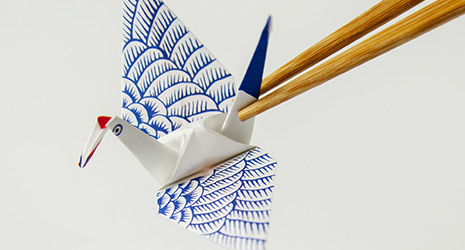
Classic Origami folded paper crane - English
- 日本語
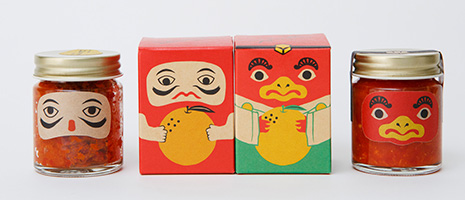
Example of a paper packaging design incorporating elements of graphic origami
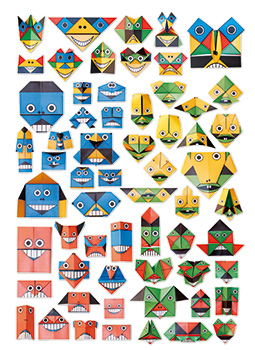
Funny Face Cards can be folded to create many different three-dimensional faces 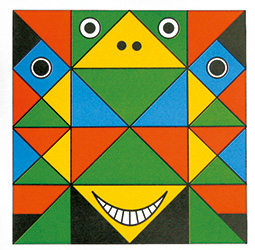
A Funny Face Card before folding 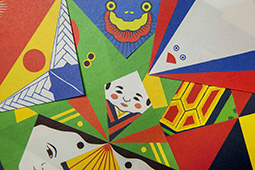
Classic Origami inspired by traditional origami 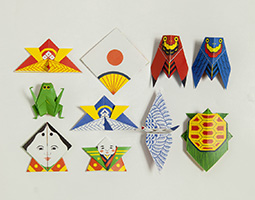
Traditional Japanese motifs such as cranes, turtles, and samurai helmets feature in the Classic Origami series
December 2021
Making Origami Cool

“Graphic origami,” which is folding paper pre-printed with colorful images and patterns to produce a new kind of “cool” origami, has been gaining much attention.

Squares of paper printed with colorful images and patterns are folded to create animal shapes such as turtles and cranes, funny faces, finger puppets and more. This “graphic origami” is the brainchild of COCHAE, a graphic design group formed in 2003 around the key concept of “making origami more cool!” Today, the group has three members and creates packaging designs as well as graphic origami.
At the time the group was formed, origami was generally made with plain paper, so when COCHAE released colorful origami paper with images and patterns, it was innovative and immediately became a hot topic.

COCHAE founding member Jikuhara Yosuke says, “Origami paper with patterns and images wasn’t being sold at the time and it wasn’t the usual thing to draw pictures on plain origami paper or make cuts in origami with scissors. We weren’t bound by the conventional style of origami, producing origami creations on the theme of ‘playful designs.’”
In fact, Jikuhara says he is not good at making complicated and difficult origami. He wanted to make origami that was easier and more fun, and focused on simply folded traditional Japanese origami such as cranes, frogs, windmills and paper cups.

“In the process of being handed down from one generation to the next, traditional origami has evolved to reach a point where anyone can easily do it. Its appeal lies in its simple beauty, which is also associated with “coolness.” Take the crane, for example, a very well-known traditional origami shape. Strictly speaking, it’s not the same shape as an actual crane, yet its form is nonetheless very beautiful and relatively easy to fold,” says Jikuhara.
The Classic Origami series is a kit based on traditional origami comprising six types of origami accompanied by illustrated instructions for folding a crane, turtle, kabuto (samurai’s helmet), and other traditional Japanese motifs. For each motif, a pattern is printed that matches the completed folded piece, making it easy to create colorful, geometric designs similar to ukiyo-e prints. The kit is now a standard among COCHAE’s products and popular as a gift to take overseas.

As Jikuhara and other group members played with the papers, they noticed that a sheet of paper on which just a few eyes and a mouth have been drawn could be folded in different ways to create a wide variety of faces. This discovery led to the creation of the Funny Face Card. Workshops are held where participants are free to fold the Funny Face Card in any way they like, with everyone from small children to the elderly creating many different origami faces. Every workshop produces faces that Jikuhara has never seen before.

In recent years, COCHAE’s work has also attracted attention for its paper packaging designs that incorporate elements of graphic origami. The company’s packaging for a condiment incorporating a daruma motif (a figurine resembling the figure of Buddhist monk Daruma seated in meditation) became such a hot topic that it was featured in a Japanese women’s fashion magazine.
Says Jikuhara, “When we held an origami workshop in Mexico, people were amazed at how a sheet of paper could take on so many different shapes, and they called me a “magician.” In the future, I would like to have people enjoy origami in different ways by for example using playground equipment or visiting parks that we have designed using origami motifs.”
COCHAE’s unconventional ideas have opened up a new world of origami.

